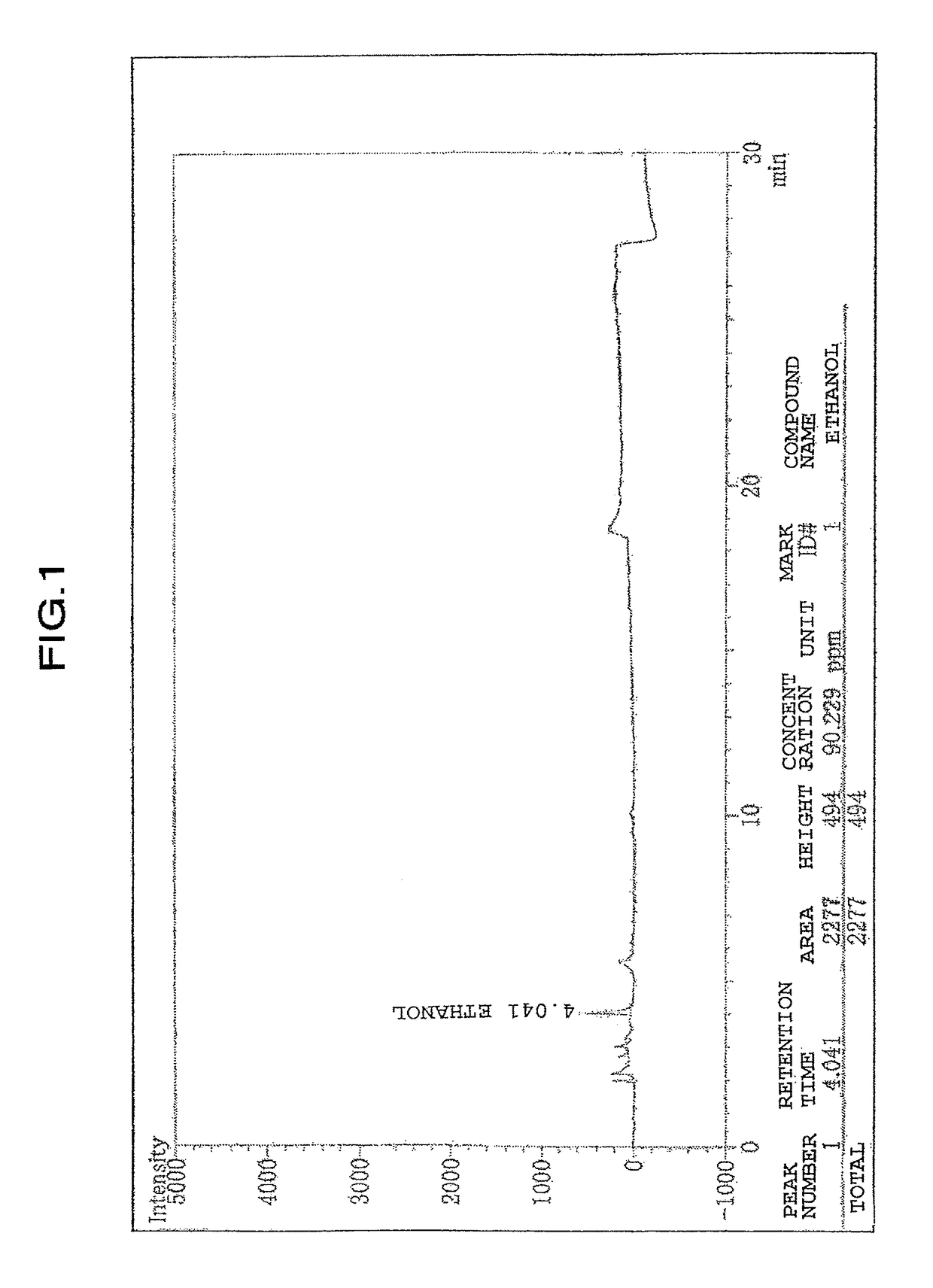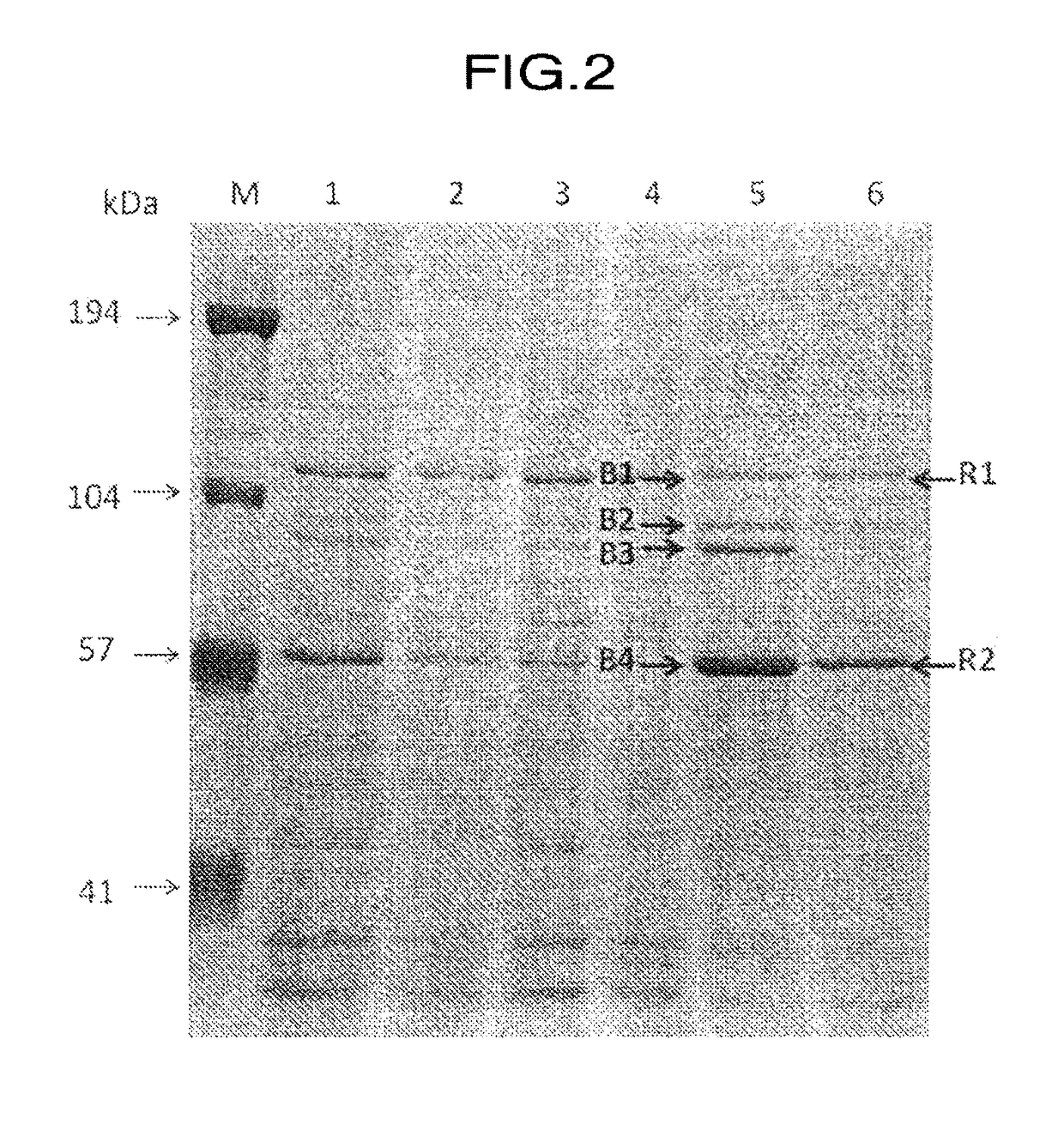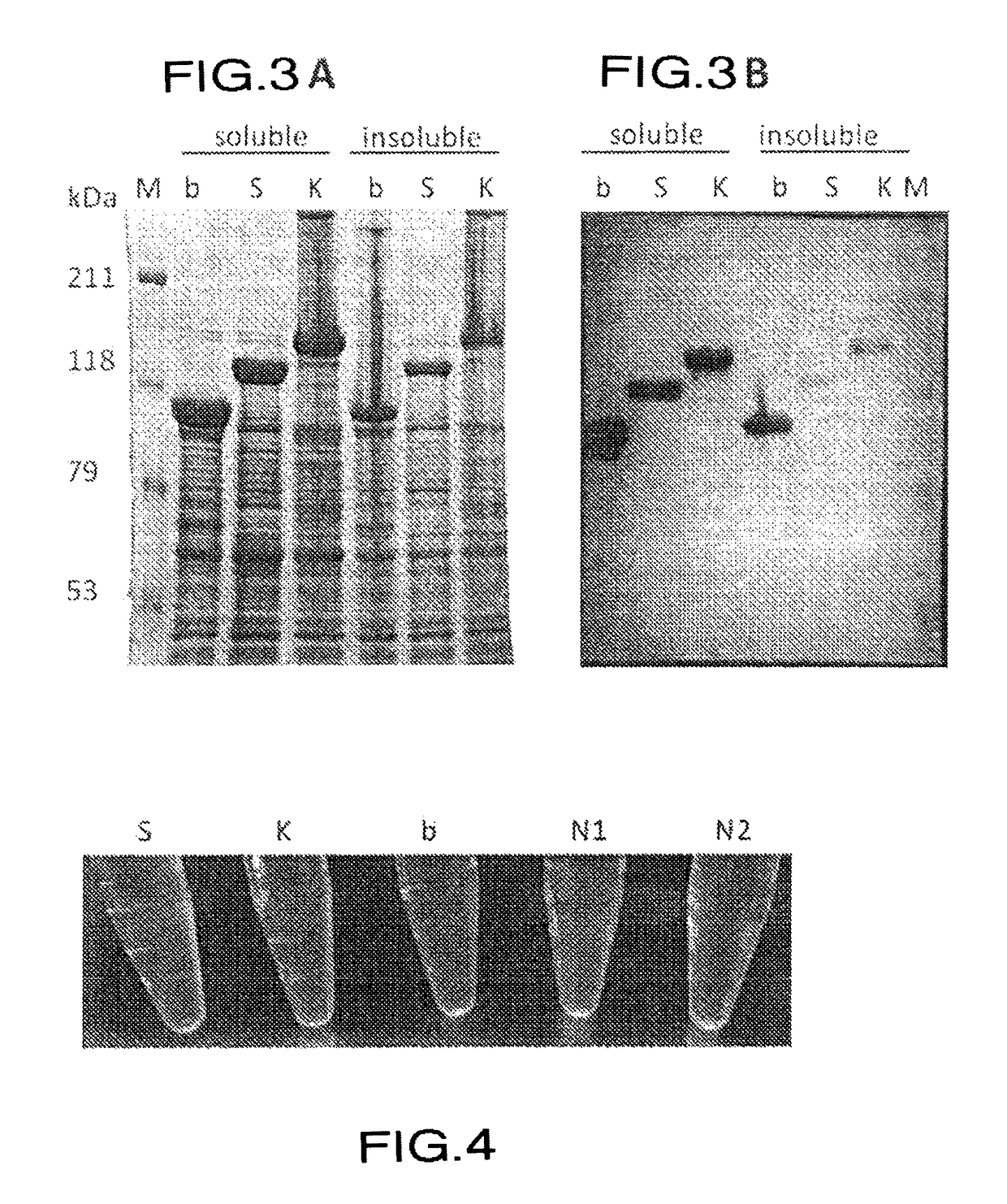Soft biomass decomposition method
a biomass decomposition and soft technology, applied in biofuels, biochemical apparatus and processes, enzymes hardly act on biomass raw materials, etc., can solve the problems of inability to direct decomposition and fermentation of actual biomass (bagasse, rice straw, etc.), and achieve the effect of simple procedur
- Summary
- Abstract
- Description
- Claims
- Application Information
AI Technical Summary
Benefits of technology
Problems solved by technology
Method used
Image
Examples
example 1
[0145]C. cellulovorans>
1. Medium
1) Medium Including Rice Straw as a Substrate
[0146]A medium including 0.5% (w / v) rice straw as a substrate was prepared through the following steps (1) to (4) with reference to Non Patent Literature 2.[0147](1) 1 g of K2HPO4.3H2O, 1 g of NH4Cl, 0.5 g of KCl, 0.5 g of MgSO4.7H20, 0.15 g of L-cysteine hydrochloride monohydrate, 0.5 g of Trypton, 0.5 g of a yeast extract, 5 g of rice straw, 20 ml of a trace metal solution, and 0.001 g of resazurin were dissolved in distilled water to adjust the volume to 1 L.[0148](2) After the step (1), the pH was adjusted to 7 by 4 M NaOH, and CO2 gas was bubbled therein until resazurin was reduced (the color of the medium changed from red to yellow) while being boiled.[0149](3) After the step (2), the flask was plugged and sterilized in an autoclave.[0150](4) After the step (3), 0.05 ml of a mixed solution of 10% (wt / vol) Na2CO3 and 1.5% (w / v) Na2S.9H2O was added thereto to adjust the pH to 7.2. Thus, a medium incl...
example 2
[0157]
1. Medium
1) Medium Including Bagasse as a Substrate
[0158]A medium including 0.5% (w / v) bagasse as a substrate was prepared by the same preparation method as that for the medium including rice straw as a substrate in Example 1 except that 5 g of bagasse were used as the substrate instead of the rice straw.
2) Medium Including Rice Straw as a Substrate
[0159]A medium including 0.5% (w / v) rice straw as a substrate was prepared by the same method as in Example 1.
3) Preculture Medium
[0160]A preculture medium including 0.3% (w / v) cellobiose was prepared by the same method as in Example 1.
2. Preparation of Sample
[0161]1) Clostridium cellulovorans (C. cellulovorans) was precultured in the preculture medium obtained in the above-mentioned section 1.3) at 37° C. for 1 day.[0162]2) A part of the medium after the culture in the above-mentioned section 1) was put in the medium including bagasse as a substrate obtained in the above-mentioned section 1. 1) or the medium including rice straw as...
example 3
[0180]
1. Confirmation of Expression of Each of Enzymes BglA, ExgS, and EngK
[0181]Recombinant BglA, ExgS, and EngK were each expressed in Escherichia coli (E. coli) serving as a host through the following steps 1) to 5).[0182]1) bglA (SEQ ID NO: 7), exgS (SEQ ID NO: 1), and engK (SEQ ID NO: 5) were each inserted downstream of Trigger factor, which was a solubilizing tag of pCold-TF (Takara Bio Inc.) serving as a vector for low-temperature expression, and gene-transferred to E. coli origami serving as a host for expression.[0183]2) For the gene-transferred E. coli origami obtained in the above-mentioned section 1), colonies to which the genes were transferred respectively were subjected to screening by a colony direct PCR method, and inoculated into a 5-ml LB medium (supplemented with ampicillin (final concentration: 100 μg / ml)).[0184]3) The colonies to which the genes were transferred respectively obtained in the above-mentioned section 2) were each cultured at 37° C. and 180 rpm for...
PUM
| Property | Measurement | Unit |
|---|---|---|
| temperature | aaaaa | aaaaa |
| temperature | aaaaa | aaaaa |
| pH | aaaaa | aaaaa |
Abstract
Description
Claims
Application Information
 Login to View More
Login to View More - R&D
- Intellectual Property
- Life Sciences
- Materials
- Tech Scout
- Unparalleled Data Quality
- Higher Quality Content
- 60% Fewer Hallucinations
Browse by: Latest US Patents, China's latest patents, Technical Efficacy Thesaurus, Application Domain, Technology Topic, Popular Technical Reports.
© 2025 PatSnap. All rights reserved.Legal|Privacy policy|Modern Slavery Act Transparency Statement|Sitemap|About US| Contact US: help@patsnap.com



